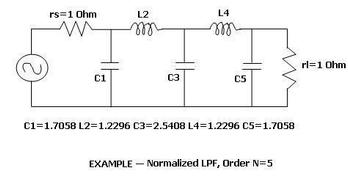
Loop Antenna: Advantages and Disadvantages
Explore the pros and cons of loop antennas, including their compact size, low cost, and limitations in efficiency and radiation resistance.
Showing 20 posts (Page 6 of 14)
Advertisement

Explore the pros and cons of loop antennas, including their compact size, low cost, and limitations in efficiency and radiation resistance.

Explore a comprehensive list of LoRa channels, mapping frequency to channel number. Optimize your LoRa devices by understanding these settings.

Calculate LoRa link budget or received power using receiver sensitivity and transmitter power. Includes formula and RF link budget details.

Explore the LoRa physical layer (PHY), its functions, and key message formats. Learn how LoRa's PHY ensures robust, long-range, low-power communication in IoT.

Explore the benefits and drawbacks of Luneburg lens antennas, including beam scanning, steering, material cost, size, and fabrication complexity.
Overview of medical frequency bands, including licensed and unlicensed spectrum, and a detailed look at WMTS frequency bands.
Explore the diverse uses of radio frequency (RF) energy in medicine, from vision correction and cancer treatment to cosmetic surgery and heart condition therapies.
A summary of frequency bands utilized in wireless medical telemetry systems, including WMTS, MICS, and common standards like Wi-Fi and Bluetooth.

Explore the benefits and limitations of metamaterial antennas, including size reduction, wide bandwidth, and electronic steering, alongside manufacturing and loss challenges.

Explore the basics of microstrip filter structures, including stub-loaded, stepped impedance, and coupled designs.

Calculate patch length and width for microstrip antenna design based on frequency, dielectric constant, and substrate height. Includes relevant formulas.
Explore the pros and cons of microwave communication, covering its large bandwidth, spectrum management, and line-of-sight limitations.
Explore the principles behind microwave heating, its applications in various industries, and the workings of a microwave oven, including safety features and mathematical representation.

Understand the distinction between microwave multiplexers and diplexers, focusing on their channel capacity and typical applications in RF systems.

Understand the fundamentals of microwave transmission lines, including types, characteristics, and impedance calculations, essential for RF energy transport.
Explore the differences and similarities between microwave transmission and coaxial cables in the context of TV broadcasting. Learn about key parameters and use cases.

Explore millimeter wave horn antennas, their technical specifications, and a list of key manufacturers. Learn about mmWave horn antenna types and applications.

Calculate the Minimum Detectable Signal (MDS) based on bandwidth and noise figure. Determine the sensitivity of your RF receiver.
Explore the differences between Minimum Detectable Signal (MDS) and Spurious Free Dynamic Range (SFDR) in RF receivers. Learn how they measure sensitivity and dynamic range.

Explore the benefits and drawbacks of Monolithic Microwave Integrated Circuits (MMICs), including cost, performance, and fabrication considerations.
Advertisement